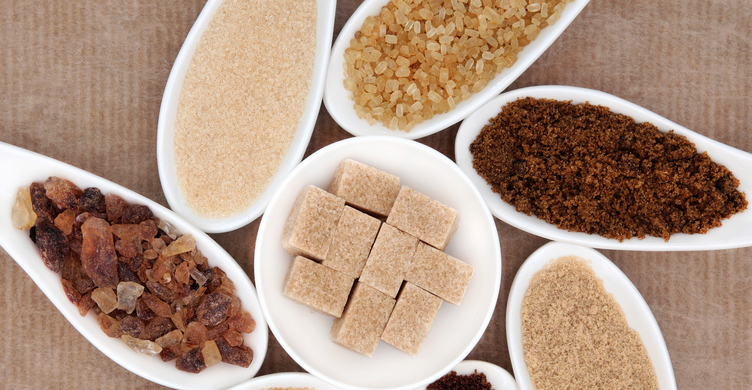Like most people nowadays, I have been trying to reduce the amount of processed sugar in my diet and cooking. Besides simply reducing the amount of sugar called for in recipes, I've often explored using various substitutes. But I've had difficulty knowing which were truly a healthier improvement versus just a different form of the same thing. As someone who loves baking, finding the right balances of sweet and health without changing the chemistry of the end product has been challenging. In general, I've found that most recipes can do with ½ to ¾ of the sugar called for in the recipe without hugely changing the texture. Even the kids in our house haven't seemed to notice the reduced sugar for the most part. A cookie is still a cookie to them despite it being secretly a little healthier. I recently ran across an article which was really helpful in clarifying the differences in different types of sugar substitutes and how to modify your recipes if you want to swap them in for the sugar. I'll go over a summary of what they discussed here, but for those that would like to read the full article you can find it here at Sugar Substitutes.
So, what's the take home message really? Sad to say, it's not really the news most of us would prefer to hear. Sugar in any of its forms is not really our bodies friend. A few of the sugar substitutes do contain small amounts of nutrients and minerals compared to table sugar: raw sugar, honey, maple syrup, dates and coconut sugar. Unfortunately, these nutrients are in pretty small concentrations, so the amount of sugar you'd need to eat to experience any real benefit would itself be unhealthy. Due to a higher ratio of fructose to sucrose, sugar substitutes such as agave and honey do have a lower glycemic index, producing less of an insulin spike in the body. However, fructose is processed by the liver, so once the processing limit of the liver is reached, it is converted into fat and stored. On the other side of the coin, coconut sugar has a higher ratio of sucrose to fructose than table sugar, so less can be converted to fat, but the insulin spike in response to it is greater than that of table sugar. Lower insulin spike good, more fat not so good. With respect to the fructose:sucrose ratio it is really picking the option which is most important to your eating habits and health situation. The last option is Stevia, which pretty much is in its own category. Stevia is much sweeter than the other types of sugars, contains no nutrients, doesn't change insulin levels but also has no calories. The taste of stevia can be a bit off-putting for some, is not great for baking and can be difficult to digest for those sensitive to sugar alcohols.
So, what's a person to do? Well, the first thing to do is to gradually reduce the amount of sugar of any type that you use in your diet. I've found that it is possible to reduce the amount of sugar in many recipes without significantly affecting their taste. Gradually reducing the amount called for in a recipe is the least jarring way and allows you to figure out if there are any effects on the texture of the food or how it cooks. The different types of sugars do behave differently, so which you try will depend a lot on what you are cooking. Studies have shown that our taste buds become more sensitive to sugar (and salt too) after a few weeks of reduced intake. This means that you will still sense that something is sweet despite it having less sugar in it. And really, that's what we all hope for. Feeling like we are having a treat while still be kind to our bodies.

